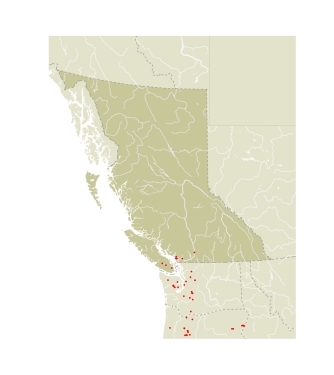The genus Loranthomitoura is named after the larval foodplants, mistletoe (family Loranthaceae), and after the related genus Mitoura. The common name for the genus, "mistletoe hairstreaks," refers to the larval foodplants being mistletoe species; it is used here for the first time.
This genus and Mitoura are separated from Callophrys and Incisalia by the spatulate (flattened) cornuti and the presence of distinct tails on the hindwing. The ventral wing pattern of Loranthomitoura is typical of the Theclini, with strong postmedian white lines. Larvae feed on tree mistletoes, hence the name. For this reason adults are seen only when they are nectaring on flowers of perennial or annual plants at ground level or on low shrubs. They are never seen flying in an open meadow. The genus is Nearctic, with four species. Ballmer and Pratt (1992b) characterize the genus based on first instar larval morphology.
|
|
